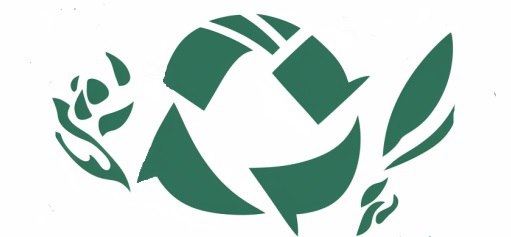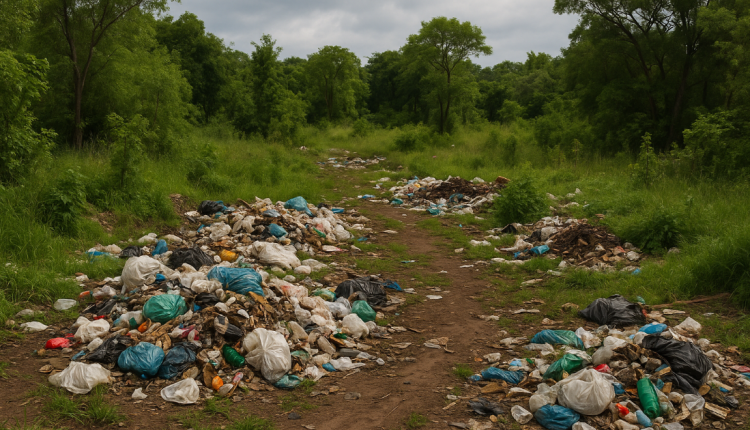- Advertisement -
When discussing the global waste crisis, the focus often turns to the vast floating garbage patches in our oceans, particularly the Great Pacific Garbage Patch. These striking images of marine pollution dominate headlines and shape public perception. However, a quieter, equally insidious phenomenon is unfolding on land. “Trash islands” are forming in terrestrial ecosystems—tropical forests, grasslands, savannas, and even protected reserves—creating zones of intense ecological disruption. These land-based waste accumulations threaten biodiversity, alter nutrient cycles, and degrade the very ecosystems upon which countless species, including humans, depend.
The Formation of Terrestrial Trash Islands
Unlike the marine garbage patches that form through oceanic currents, terrestrial trash islands typically emerge near human settlements, roads, tourism hotspots, illegal dumping grounds, or agricultural developments. In tropical forests, for instance, the convergence of increasing human access—through logging roads or mining operations—and lack of waste management infrastructure leads to the rapid accumulation of refuse. In savannas and grasslands, open landscapes make them vulnerable to wind-blown plastics and the proliferation of roadside dumping.
These trash accumulations are not merely temporary or cosmetic problems. Over time, they become entrenched features of the ecosystem. Scavenging animals disperse the waste further, rainwater leaches toxins into the soil, and invasive plant species colonize the disturbed zones. What begins as scattered litter evolves into semi-permanent disruptions in natural environments.
Impacts on Biodiversity and Wildlife
One of the most immediate consequences of terrestrial waste islands is their impact on wildlife. Animals often mistake plastic and other non-biodegradable materials for food. Ingestion of plastics can lead to internal injuries, intestinal blockage, poisoning, and eventual death. Birds, reptiles, and mammals in tropical and subtropical regions are particularly vulnerable, especially in areas where waste is intermingled with organic food remnants, drawing them in.
Furthermore, entanglement in discarded fishing lines, netting, and plastic bags can trap animals, impair mobility, and cause suffocation. Species that rely on clean habitats for nesting—such as ground-nesting birds—may find their breeding grounds compromised by layers of synthetic debris. This loss of reproductive habitat leads to population declines, threatening local biodiversity.
In addition, trash islands disrupt predator-prey dynamics. Opportunistic species like rats and feral dogs are often drawn to waste sites, where they find plentiful food and minimal competition. These animals can outcompete or prey upon native species, leading to ecological imbalances. Such invasions are especially dangerous in biodiversity-rich but fragile systems like tropical rainforests.
Chemical Contamination and Soil Degradation
Trash accumulations are not only visible pollutants; they also have profound chemical impacts on ecosystems. Plastics and other synthetic materials leach a variety of toxic substances into the soil and groundwater. These include heavy metals, flame retardants, plasticizers, and persistent organic pollutants. Once in the soil, these chemicals alter microbial communities, reduce fertility, and may enter the food chain through plants and invertebrates.
In nutrient-poor ecosystems like savannas, even small shifts in soil chemistry can have outsized consequences. Trash islands may foster the growth of certain plants that thrive in degraded conditions while excluding more sensitive native flora. The result is a shift in plant community composition that reverberates through herbivores, pollinators, and predators.
Moreover, the presence of non-organic debris impedes natural decomposition processes. Leaves and organic matter that would normally decompose and recycle nutrients become trapped under plastic sheets, slowing their breakdown. This disrupts the natural nutrient cycling essential for maintaining ecosystem productivity.
Fire Hazards and Air Pollution
In many parts of the world, the default waste management strategy is open burning. Trash islands, especially in rural and forested areas, are frequently set on fire to reduce volume. This practice releases a cocktail of toxic emissions, including dioxins, furans, and particulate matter, into the air. These pollutants can affect local air quality, human health, and nearby vegetation.
In fire-prone ecosystems such as dry forests and savannas, burning waste can spark uncontrolled wildfires. These fires not only threaten human communities but also destroy vast tracts of habitat, killing countless animals and altering the structure and function of the ecosystem.
Cultural and Aesthetic Consequences
Beyond their ecological impacts, terrestrial trash accumulations erode the cultural and aesthetic value of natural landscapes. In many indigenous and rural communities, the land holds spiritual, historical, and cultural significance. The presence of pervasive waste undermines traditional relationships with nature, affects community well-being, and can even lead to social conflict over land use and environmental responsibility.
Ecotourism, a critical economic resource for many biodiverse regions, is also jeopardized by visible pollution. Tourists expect pristine environments, and the sight of overflowing dumps or scattered trash in national parks can deter visitors and harm local economies dependent on nature-based tourism.
Lack of Infrastructure and Policy Failures
One of the key drivers behind the formation of trash islands in terrestrial ecosystems is the lack of effective waste management infrastructure. In many developing regions, especially in rural and forest-adjacent areas, there are no formal systems for waste collection, segregation, or disposal. Waste is simply dumped, buried, or burned.
Policy failures also play a significant role. Environmental regulations are often poorly enforced, and penalties for illegal dumping are minimal or non-existent. Corruption and lack of coordination between government agencies exacerbate the problem. Even in areas where conservation is prioritized, waste management is rarely integrated into ecological planning and land-use strategies.
Pathways Toward Solutions
Addressing terrestrial trash islands requires a multifaceted approach. First and foremost, investment in decentralized waste management systems is critical. Composting centers, recycling hubs, and community-led cleanup efforts can be implemented even in remote areas with limited infrastructure.
Education and community engagement are equally important. Locals must be empowered with knowledge about the ecological and health risks of unmanaged waste and be included in the design and implementation of waste solutions. NGOs and environmental organizations can play a pivotal role in bridging knowledge gaps and fostering stewardship.
Policy reforms are essential at the national and international levels. Governments must prioritize rural and ecologically sensitive areas in their waste management strategies and allocate funding accordingly. Stricter enforcement of dumping laws, incentives for sustainable packaging, and support for waste-to-energy innovations can all contribute to reducing the formation of terrestrial trash islands.
Conclusion
Trash islands are not confined to our oceans. They are forming in forests, grasslands, and on the outskirts of human settlements, quietly undermining the health of terrestrial ecosystems. These accumulations of waste are not just an eyesore—they are ecological time bombs that threaten biodiversity, poison soils, disrupt food webs, and compromise the cultural and aesthetic value of nature.
To confront this growing crisis, we must expand our vision of environmental stewardship to include land-based waste pollution. By acknowledging the gravity of terrestrial trash islands and implementing inclusive, sustainable solutions, we can begin to heal these wounded ecosystems and protect the integrity of the biosphere for generations to come.

